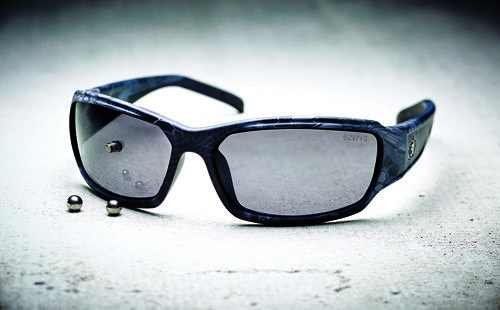Selecting compliant protective eyewear
When selecting protective eyewear, most higher-quality options have various features and upgrades, including impact re-sistance, anti-fog technology, ultraviolent resistance and polarized lenses. What do each of these technologies provide and why should workers want them in their safety glasses?

Responding is Chris Cota, senior product manager, Ergodyne, St. Paul, MN.
An average of 2,000 U.S. workers suffer eye injuries daily, with 100 resulting in missed workdays. These injuries cost more than $300 million a year in lost time, medical expenses and workers’ compensation – as well as potentially lifelong consequences. Considering safety glasses are mandated on a majority of worksites, why do workers willingly put themselves at risk by foregoing protective eyewear?
One of the primary reasons is poor performance. Higher-quality eyewear exceeds minimum safety standards by offering productivity-enhancing features such as impact and scratch resistance, anti-fog technology and polarized lenses that filter harmful ultraviolet rays – with the best offering multiple technologies at once. So, what exactly do these technologies provide workers?
Impact resistance: Look for Z87 safety glasses marked with ANSI Z87.1 Performance Standard compliance (tested for impact and coverage) or Z87+ (tested for high impact). Some glasses are also tested to a more rigid U.S. military impact test, although there’s no specific marking. Look for MIL impact glasses to be called out on packaging or in marketing materials.
Anti-fog: Safety glasses that fog up are frustrating enough that a 2009 study cited it as the primary reason for why workers refuse to wear them. Fogging causes workers to remove eyewear to wipe it dry or stop wearing it entirely. Eyewear with anti-fog technology can significantly decrease injuries by providing a consistently clear view. But not all anti-fog technologies are created equal. Many anti-fog safety glasses feature topical coatings on the lens’ surface. These have a limited life span and can wash off after a short time. Anti-fog treatments that are permanently bonded will not wash or wear off after long-term use – even in extreme temperatures.
UV resistance: Outdoor work presents an added risk of sun damage to eyes. According to the American Optometric Association, UV-protection sunglasses should block 99.9% of UVA/UVB rays, screen 75% to 90% of light and wrap around the head for maximum protection from all angles. The top lenses on the market are made of polycarbonate materials covered with a scratch-resistant coating.
Polarized: Sources of glare such as water, roadways or other shiny surfaces can make life difficult for anyone, particularly people with sensitive eyes or migraine susceptibility. This is why polarized glasses have become increasingly popular for traditional sunglasses as well as protective eyewear. A special filter blocks this intense reflected light, reducing glare by allowing only direct light to enter the field of vision – leaving eyes feeling more comfortable and rested.
Educating site managers and workers on the proper eyewear for the job is critical to creating a culture of compliance. Going beyond the minimum is an investment in the workforce and demonstrates a commitment to quality, safety and the value of individual workers.
Editor's note: This article represents the independent views of the author and should not be construed as a National Safety Council endorsement.
Post a comment to this article
Safety+Health welcomes comments that promote respectful dialogue. Please stay on topic. Comments that contain personal attacks, profanity or abusive language – or those aggressively promoting products or services – will be removed. We reserve the right to determine which comments violate our comment policy. (Anonymous comments are welcome; merely skip the “name” field in the comment box. An email address is required but will not be included with your comment.)

